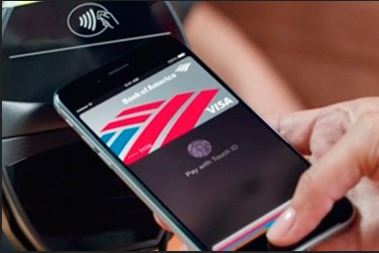Following the launch of Apple Pay, Juniper Research thinks NFC will finally be a success

After a decade where NFC (Near Field Communications) has suffered from what Juniper Research called a "vicious cycle of indifference", the company expects this month's launch of Apple Pay to boost the technology in the US market.
In a white paper, Juniper says: "We would now argue that Apple Pay will not only drive, but will create a ‘halo effect’ towards contactless payment in general. We still believe that in most markets this will primarily be driven by contactless card transactions, but that the greater awareness of handset contactless payments that Apple will generate will, in turn, result in an uplift in adoption and usage."
The US market is decades behind Europe and Asia, where contactless payment cards and EMV (Europay MasterCard Visa) are already in widespread use. However, the US is finally adopting EMV with the move from magnetic-stripe cards to "chip and PIN", and Juniper expects retailers to upgrade their point-of-sale equipment to include NFC as well.

Juniper had been pessimistic about the market after the dismal showing of the NFC-based Google Wallet, launched in 2011, and Apple's failure to include NFC in the iPhone 5. Apple had also said that BLE (Bluetooth Low Energy) and Wi-Fi had "more desirable characteristics for maintaining the link over time than NFC", and it could have adopted BLE instead.
With the arrival of Apple Pay, based on industry-standard EMV contactless protocols running over NFC, Juniper has changed its view.
In the context of the US market's development, Apple Pay has arrived at a better time than Google Wallet. It also has significant advantages. Instead of the smartphone connecting to a cloud-based server to get the token that is used in the payment process, the Apple Pay token is generated on the smartphone, using an embedded SE (Security Element). This is faster and more secure.
Apple also uses its fingerprint-based Touch ID for authentication, as opposed to typing in a four-digit pin.
A third advantage is increased privacy. When someone makes a purchase using Apple Pay, the retailer only sees a token, and does not know which card or bank has been used. The retailer can't store bank card details, email addresses or passwords: it does not have them.
This is a disadvantage for the retailers and for companies such as Google, because it stops them from tracking purchases and using the information for loyalty card schemes. It's also a disadvantage for MNOs (mobile network operators), who have lost control of the SIM-related tokenization process.
As a result, Juniper says it expects MNO-based payment systems to fall to less than 50 percent of the market by 2019, despite the "relatively strong adoption of this model in some developing markets and in the Far East & China". In the US market, it expects their market share to fall to 3 percent.
Despite its advantages, Juniper's report predicts that Apple Pay will still have a small minority of the NFC-based payments market in 2019, as shown in the pie chart below. After all, Apple has a minority share of the global smartphone market, and alternative contactless systems have already been adopted in other parts of the world. Indeed, Apple Pay won't even work outside the US until 2015.
Juniper predicts that Host Card Emulation (HCE) systems such as SoftCard will have a larger market share, and these have the advantage of being cross-platform. BBVA and Bankinter in Spain, and CUA in Australia, have launched HCE-based services, and there are pilot schemes running in countries such as Russia and New Zealand. HCE is supported by Visa and MasterCard, and Google has included it in Android 4.4 (KitKat).
Juniper has published a free white paper, Getting in Touch with NFC (sign-up required). It is selling the full report: NFC Mobile Payments: Apple Pay, Host Card Emulation & SIM Based Opportunities & Forecasts 2014-2019.
The short white paper doesn't mention the CurrentC system being developed by a consortium of US-based retailers, which is designed to eliminate the hefty transaction charges they pay to card suppliers. Although this has been hyped as a rival to Apple Pay, it's more of a replacement for retailer-specific systems such as Target’s REDcard.